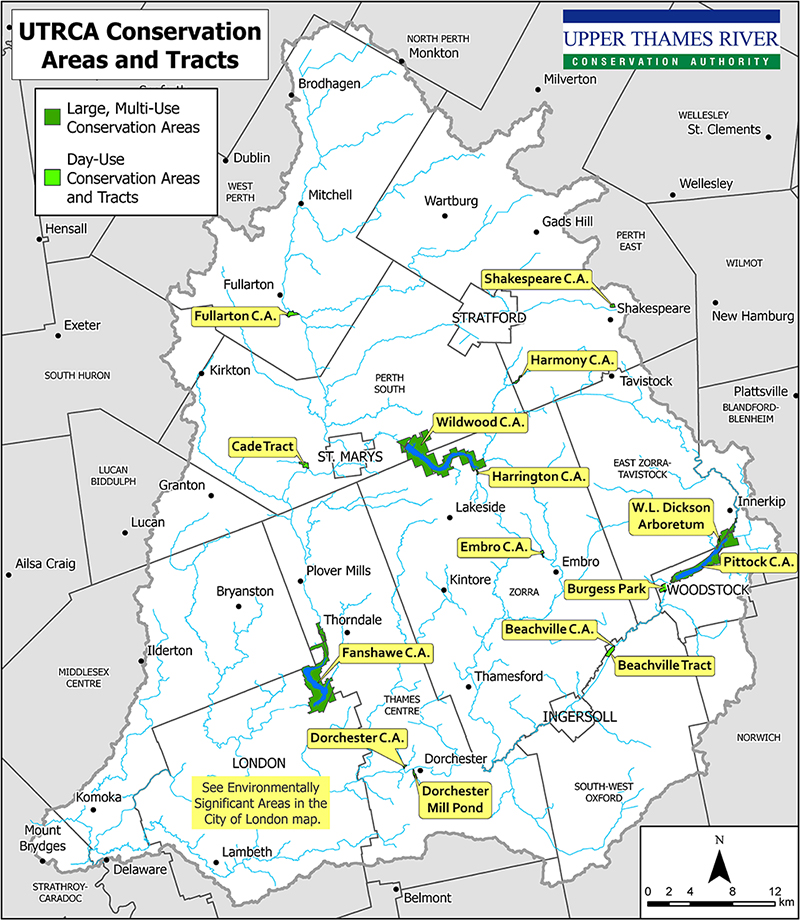Day-Use Conservation Areas and Tracts
The UTRCA has 11 small day-use conservation areas (CAs) and tracts that are open to the public, free of charge, as well as an arboretum (see map below). Each of the CAs is managed or co-managed by a local service club or the municipality, in partnership with the UTRCA. These areas are popular for passive activities such as walking, picnicking, birding, and fishing.
The property managers and UTRCA continue to improve the ecological health of these properties by planting more native trees, shrubs, and wildflowers, controlling non-native invasive species, and other works. Please help protect the plants and wildlife by keeping your dog on leash, not littering, not picking plants, and staying on designated trails where provided.
There are no entrance fees. Services are limited and may include a parking lot, garbage containers, and information signs. Please note that ATVs, snow machines, and other off road vehicles are NOT permitted.
Click on the properties below or in the navigation menu to learn more about them, what they have to offer, and what activities are permitted.
The UTRCA also protects more than 2,000 hectares of other lands including wetlands, flood plains, and agricultural lands. These properties have no access or limited access for hunting only.

History of the Small Rural Conservation Areas
In the 1950s and 1960s, the UTRCA established many small recreational conservation areas, in partnership with local municipalities and the provincial government, to provide free day-use areas for local citizens. Most of these conservation areas included the construction of a small dam and reservoir where local residents could swim, boat, fish, and skate. Many sites were former farmland and so trees were planted to provide shade and habitat, and short walking trails were developed.
In the mid-1990s, provincial funding of conservation authorities was substantially reduced and the UTRCA could no longer maintain these small properties. Local service clubs and municipalities stepped in to take over management of the parks and these agreements continue today. In addition, the following properties were sold to the local municipalities:
- Centreville Pond and CA – Township of South-West Oxford
- Dingman Creek CA – City of London (site now called Lower Dingman Environmentally Significant Area)
- Kirkton CA on Fish Creek – Township of Perth South
- Reynolds Creek CA – Municipality of Thames Centre
- Woodham Tract on Flat Creek – Township of Perth South

